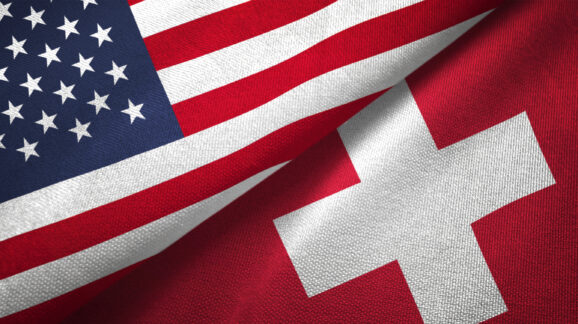Swiss trade deal could be a good start towards mutual recognition

Photo Credit: Getty
Switzerland’s government announced today that it reached an agreement on a trade framework with the United States. America’s Liberation Day tariff rate on Swiss products is currently 39 percent. This would fall to 15 percent under the new agreement. There are three points worth making here.
One, don’t call this tariff relief. A year ago, Americans paid an average tariff of 2 to 3 percent when buying Swiss products. Even a 15 percent tariff is five to seven times higher than what Americans were paying in July.
I wrote earlier about how the anchor heuristic could make deals like this seem as if tariffs are falling. Don’t be fooled. Tariffs will remain far above pre-Trump levels.
Two, the Supreme Court’s IEEPA tariff case could render this agreement moot, especially if some of its provisions depend on IEEPA-based policies. If the Court rules President Trump’s IEEPA tariffs unconstitutional, tariffs on imported Swiss goods will revert to their previous levels. Other policy effects are uncertain.
The Trump administration will likely turn to other statutes to reimpose tariffs that get struck down. If it survives the Court’s verdict, this agreement could provide Switzerland some protection against tariffs higher than 15 percent.
Three, there is a better model for a trade agreement. Kent Lassman and I outlined what a US-Swiss trade agreement could look like in a paper last year. In addition to low tariffs, the centerpiece would be mutual recognition.
Mutual recognition means that if a trusted trading partner’s regulators have approved a product, such as a novel drug, then it is automatically approved in the other country. It is a good policy for the US to pursue with wealthy allies who have similar regulatory standards, such as Switzerland, the EU, the UK, Canada, and Japan, among others. We do not recommend mutual recognition deals with China or Russia.
Mutual recognition could spare businesses regulatory headaches due to duplicative approval processes that have roughly similar safety and quality standards.
Switzerland has a significant pharmaceutical industry, and mutual recognition could give American patients faster access to safe and effective new drugs.
Mutual recognition would also give American manufacturers access to new markets. Appliances, electronics, and other products that are safe for American consumers are also safe for Swiss consumers. It would automatically clear obstacles like imperial-to-metric conversions for cord lengths and other inconsequential policies that serve as de facto trade barriers keeping US products out of foreign markets.
Today’s US-Swiss trade framework announcement could be good news, depending on the details. But it would be substantially better if it included broad mutual recognition and if it could serve as a model for future agreements.
Read Kent’s and my US-Swiss trade agreement paper here.